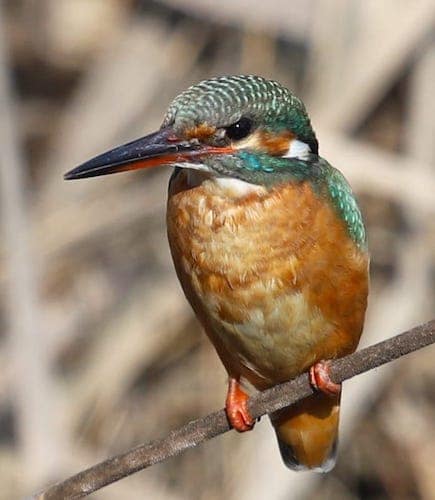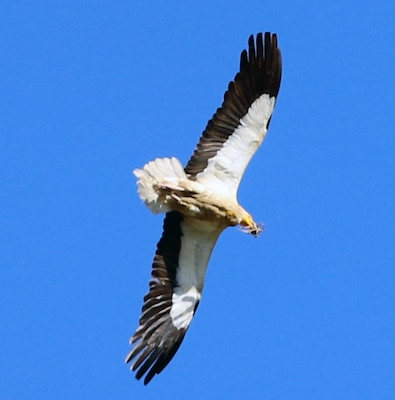Albanian Republic

Birding Albania
The Republic of Albania is a country in South Eastern Europe. It is bordered by Greece to the southeast, Montenegro to the north, Kosovo to the northeast, and the Republic of North Macedonia to the east. It has a coast on the Adriatic Sea to the west, and on the Ionian Sea to the southwest. It is less than 72 km (45 miles) from Italy, across the Strait of Otranto which links the Adriatic Sea to the Ionian Sea. Albania has a total area of 28,750 square and its coastline is 362 kilometres. The lowlands of the west face the Adriatic Sea. The 70% of the country that is mountainous is rugged and often inaccessible from the outside. The highest mountain is Korab situated in the district of Dibra, reaching up to 2,753 metres (9,032 ft). The country has a Mediterranean climate in lowland areas with dry summer and mild winter and continental climate at its high-altitude regions with cold winters and hot summers. Besides the capital city of Tirana, which has 800,000 inhabitants, the principal cities are Durrës, Elbasan, Shkodër, Gjirokastër, Vlorë, Korçë and Kukës.
The three largest and deepest tectonic lakes of the Balkan Peninsula are located in Albania.
Lake Shkodër in the country’s northwest has a surface of 368 km², out of which 149 km² belong to Albania. The Albanian shoreline of the lake runs for 57 km.
Ohrid Lake is situated in the country’s southeast and is shared between Albania and Republic of Northern Macedonia. It has a maximal depth of 289 meters and a variety of unique flora and fauna can be found there, including ‘living fossils’ and many endemic species. Because of its natural and historical value, Ohrid Lake is under the protection of UNESCO. Over a third of the territory of Albania – about a million hectares (2.5 million acres) – is forested and the country is very rich in flora. About 3.000 different species of plants grow in Albania, many of which are used for medicinal purposes.
Phytogeographically, Albania belongs to the Boreal Kingdom and is shared between the Adriatic and East Mediterranean provinces of the Mediterranean Region and the Illyrian province of the Circumboreal Region. According to the WWF and Digital Map of European Ecological Regions by the European Environment Agency, the territory of Albania can be subdivided into three eco-regions: the Illyrian deciduous forests, Pindus Mountains mixed forests and Dinaric Mountains mixed forests.
The forests are home to a wide range of mammals, including wolves, bears, wild boars, wildcats, pine martens and polecats. Chamois is present in alpine meadows and slopes. The Balkan Lynx, is quite rare, but survives in some parts of the country.
The avifauna is very rich, with 354 species of birds recorded in the country. Coastal wetland along the Adriatic coast are particularly important for numerous waterbirds and non-waterbirds species. Those wetlands compose a main route of migratory birds, also known as the Eastern Adriatic Flyway. Most of the major wetland sites of Albania are recognised as Important Bird and Biodiversity Areas.

Egyptian Vulture Neophron percnopterus © Kristi Bashmili
Some major bird destinations could be Divjaka–Karavasta home to the Dalmatian Pelican and other colonially nesting waterbirds, Narta for breeding waders and gulls, Gjirokastra home to the globally endangered Egyptian Vulture and other birds of prey, Shkodra region for waterbirds and song birds in lakes, forests and alpine areas, Prespa Lakes for waterbirds and songbirds in lakes, reedbeds, mountainous forest and alpine meadows.
-
Butrinti National Park
InformationSatellite ViewButrint is located in the south of Albania, on the coast opposite the island of Corfu (which is Greek). It is an especially interesting site as it has one of the best Greek/Roman ruins (currently being improved by a British archeological foundation) in the Mediterranean, and which is part of the Butrint National Park. The park encompasses a typical Mediterranean coastal wetland, which is being referred for Ramsar status. The website has a birdlist for the park. Anyone birding Corfu could easily get there via the ferry from Corfu to Saranda (not far), in Albania. Taxis to the site (24 kms) are quite cheap and there is even a very cheap local bus if you are prepared to wait. The wetland and surrounding hills have footpaths which are marked on the informative park leaflet (in English). The area is peaceful, as are the local people, and very definitely non-threatening and a visit can combine high class birding and a superb cultural experience.
-
Top Site - Paul Mollatt
UK | paul_mollatt@hotmail.com
-
Julian Trushi
Albanian Ornithological Society (AOS) | julian.trushi@aos-alb.org
Albanian Ornithological Society
-
Number of bird species: 353
As at July 2018The national bird of Albania is the Golden Eagle Aquila chrysaetos
-
iGoTerra Checklist
iGoTerra ChecklistFatbirder Associate iGoTerra offers the most comprehensive and up to date birds lists on the web
-
Albanian Ornithological Society
WebsiteThe society exists to identify and provide practical, theoretical, institutional and legal alternatives for long-term solutions in the protection and enhancement of bird community and their critical habitats, biodiversity, nature and environment in Albania and to work closely with all the stakeholders for the sustainable use of natural resources. -
Preservation and Protection of Natural Environment in Albania
WebsiteCenter for Protection and Research of birds, Preservation and Protection of Natural Environment in Albania, Macedonian Ecological Society and Ornithological society „Naše ptice" will jointly implement the project "Birds Without Borders-BWB" in the next 9 month with the aim to empower and strenghten cross border cooperation of environmental civil society organization working on birdlife protection in the Western Balkans.
-
Butrint Bay Trail
Observatory WebsiteSatellite ViewThe woodland is dominated by trees such as elm, ash, valonian oak, white poplar and holm oak. Golden orioles, common buzzards, scops owls and lesser kestrels can be seen here along with Balkan green lizards, agile frogs, common terrapins and the globally endangered Hermann’s and marginated tortoises… -
IBAs - Albania
InformationSatellite ViewBirdLife International's annotated list of IBAs in Albania. -
NP Butrint
InformationSatellite ViewButrint nature park boasts a high degree of biodiversity, with the presence of rare species under preservation, which make the site attractive for eco-tourists and naturalists… -
NP Divjakë-Karavasta
InformationSatellite ViewThe wealth of fauna is represented by 228 species of birds, 25 species of mammals, 29 species of reptiles and 29 species of amphibians. -
NP Hotovë-Dangelli
InformationSatellite ViewThe old growing trees throughout the park preserves a wide variety of bird species. Most notable amongst them are the golden eagle, eagle owl, barn owl, sparrowhawk, Egyptian vulture, kestrel, lanner falcon and so on -
NP Hotovë-Dangelli
InformationSatellite ViewDue to its favorable ecological conditions and the mosaic distribution of various types of habitats, it is characterized by exceptionally rich and varied fauna. The forests are the most important habitats for mammals like wild cat, roe deer, wild boar, red squirrel, eurasian otter and badger. Brown bear, gray wolf and red fox can also be seen on the pastures deep inside the forest.[5] The old growing trees throughout the park preserves a wide variety of bird species. Most notable amongst them are the golden eagle, eagle owl, barn owl, sparrowhawk, egyptian vulture, kestrel, lanner falcon and so on. -
NP Prespa
InformationSatellite ViewClassified as an Important Bird Area, however, birds are without question the park's most numerous class of animal with more than 270 species. Approximately 132 of the bird species utilising the park can be classified as breeding species and the remaining species are either resident or non-breeding visitors to the park. The white and Dalmatian pelican, which is one of the largest bird species in the world, spend the summer season in the lakes of the park associated with the undisturbed wetlands, freshwater marshes and permanent streams. -
NP Shebenik-Jabllanicë
InformationSatellite ViewDiverse birds range across different habitats, while the close proximity of trees, especially beech and pines, affords them good nesting opportunities. The golden eagle is found in areas with rocky terrain and mountains, while short-toed snake eagle is found wherever there are large bodies of water. The peregrine falcon is both a resident and a visitor of the national park, and nests notably on cliffs and rocks. -
NP Theth
InformationSatellite View50 species of birds have been observed, with raptors such as the golden eagle, lesser kestrel, nuthatch, robin, blackbird, red-backed shrike, western capercaillie and rock partridge. -
NP Tomorr
InformationSatellite ViewTomorr is an anticline composed of limestones and karst. The mountain is one of the highest natural points of southern Albania, rising between the valleys of the rivers Osum and Tomorrica in the east close to Berat. Numerous species of large mammals such as wolves, foxes, wild boars, roe deers, wild goats, rabbits, golden eagles, owles, and sparrowhawks can be found inside the national park. -
NP Valbonë Valley
InformationSatellite ViewDue to the temperature and climate differences between different areas and elevations, the park is characterized by exceptionally rich and varied fauna. The park represents one of the most important national bio centers of wild fauna in the country. The total number of bird species is 145. Important birds of prey with high conservation value include the golden eagle, booted eagle, Egyptian vulture, sparrowhawk, goshawk, lanner falcon, saker falcon, peregrine falcon and honey buzzard. The park hosts seven species and populations owls, such as the barn owl, scops owl, eagle owl, little owl, tawny owl, long-eared owl and short-eared owl. Other families of birds inhabiting the park include the alpine swift, alpine accentor, great cormorant, grey heron, rock partridge, common ringed plover, stock dove, common cuckoo and eurasian golden oriole -
NP Zall-Gjoçaj
InformationSatellite ViewAlthough small in size, it is abundantly rich in its biodiversity and habitat. Most of the park's land area is covered by a mixture of beech, fir, pine, ash and maple trees growing on limestone and dolomite. The park's woods are important because they provide shelter for numerous fauna. Most notable amongst them is the brown bear and grey wolf. Other large mammals include lynxes, roe deers and birds such as the golden eagle. -
NR Gashi River
InformationSatellite ViewThe nature reserve forms a part of the European Green Belt and has been declared a UNESCO World Heritage Site within the Primeval Beech Forests of the Carpathians and Other Regions of Europe. The fauna is represented by 64 species of mammals, such as the brown bear, gray wolf, chamois, lynx, roe deer, wild boar, western capercaillie, golden eagle, eurasian otter and 14 species of amphibians... -
NR Kunë-Vain-Tale
InformationSatellite ViewThe nature reserve was established in 2010, it encompasses the Kunë Island, the Kunë-Vain lagoon, the woodlands, and several ecosystems. It has been identified as an Important Bird Area by BirdLife International with 196 species of birds. -
Wetland of International Importance
WebpageSatellite ViewThe Convention on Wetlands came into force for Albania on 29 February 1996. Albania presently has 4 sites designated as a Wetlands of International Importance.
-
FEATURED
Albanian Ornithological Society
Tour OperatorCurrently, we are Offering Bird Watching Tours throughout Albania's Protected Areas. So far we have a good experience and very positive feedback from our international partners. -
Albanian Trip
Tour CompanyWe’re offering a day tour to bring you to some of Albania’s best bird-watching areas. Drop us an email to give us more details about when you are coming and how many people are in your group! Depending on the season and where the higher activity of birds is, we will adapt this day according to your needs.
-
2009 [05 May] - Croatia & Montenegro
Report PDF…During the eight days spent in Croatia and Montenegro we saw a total of 139 different species of birds plus 3 subspecies of Yellow Wagtail… -
2012 [04 April] - Croatia & Montenegro
Report PDF…After crossing the border to Montenegro we drove around the picturesque southernmost fjord of Europe, the Kotorsko-Risanski Bay. A pair of Golden Eagles was seen while having picnic lunch. We stopped to admire the agility of Crag Martins near Risan….
